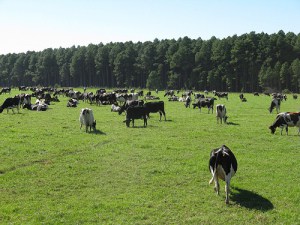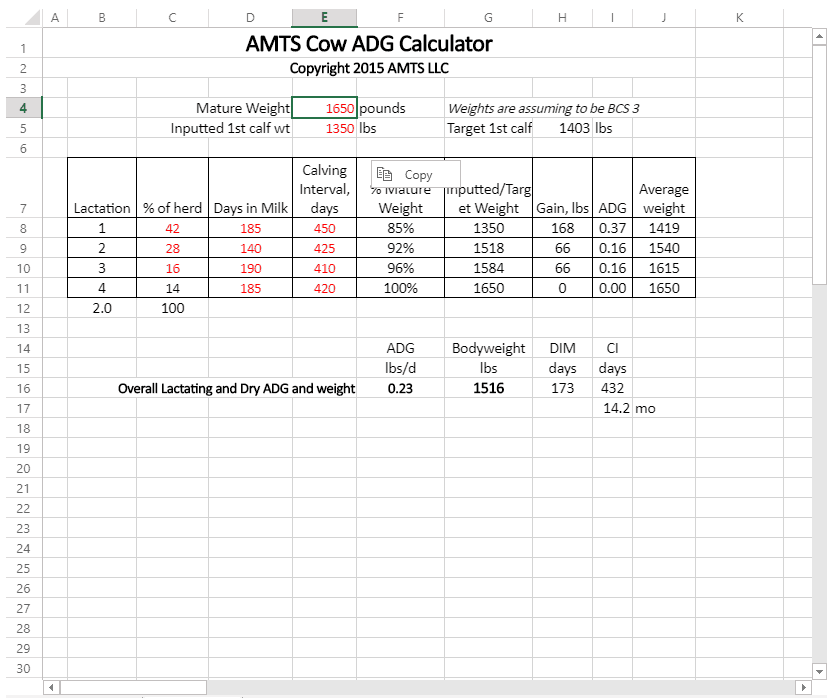Problem
We commonly are asked how much ADG to input for lactating and dry dairy
cows.
Solution
The inputted ADG for lactating dairy cows can be viewed two ways.
First is thinking in terms of an acceptable safety factors for formulation.
The calculations for ADG are the only component that do NOT change the
predicted DMI. Thus, using ADG is a great way to provide some formulation
safety. Typically, inputting about 1/4 pound equals about 2 pounds ME and MP
allowable milk.
Second, and much more biologically correct, is to calculate what a herd will
actually average for ADG. If we assume that the cows follow normal growth
patterns to meet target weights at calving, we can calculate this from some
simple inputs. For example, using herd population dynamics from a commercial
700 cow herd, 1,650 pound mature weight and 381 day calving interval, we
find the following:
| Lactation | 1 | 2 | 3 | 4+ |
| % of Herd | 42 | 28 | 16 | 14 |
| % of Mature Weight | 85 | 92 | 96 | 100 |
| Weight | 1403 | 1518 | 1584 | 1650 |
| Gain, LBS | 116 | 66 | 66 | 0 |
| ADG | .303 | .173 | .173 | .000 |
Overall Lactating and Dry ADG 0.20
As you can see, for this herd, the overall ADG is 0.20 pounds per day!
Failing to take this into account during formulation will result in less
then desired milk production, or impaired immune or reproductive function.
This is a different way of including a safety factor. Many nutritionists
will formulate for a higher level of milk production to lead the cows.
Doing this, though, can introduce a couple problems. First, if the group
(herd) is only averaging 65 lbs of milk, why are you formulating for 80? And
second, what level of intake are your formulating for?
Did you know that when you change the inputted milk (e.g. from 65 to 80 lbs), the predicted intake changes by over 4 pounds? That can result in very different diet densities. Changing milk fat also changes predicted DMI (going from 3.5 to 4% results in almost 2 lbs shift in DMI). This is because the predicted DMI is driven by body weight and fat corrected milk.
Using ADG as a safety factor does not affect predicted DMI. So, you are simply making a slightly more concentrated diet.One of our problems in feeding for increased production is that following the model predictions closely, results in almost zero inherent safety factors. So, something as simple as formulating for ¼ lbs ADG inputted can allow the nutritionist to breathe a little easier!
Below is a spreadsheet available to do the above calculations. You can put your own numbers in the spaces that are in red.


